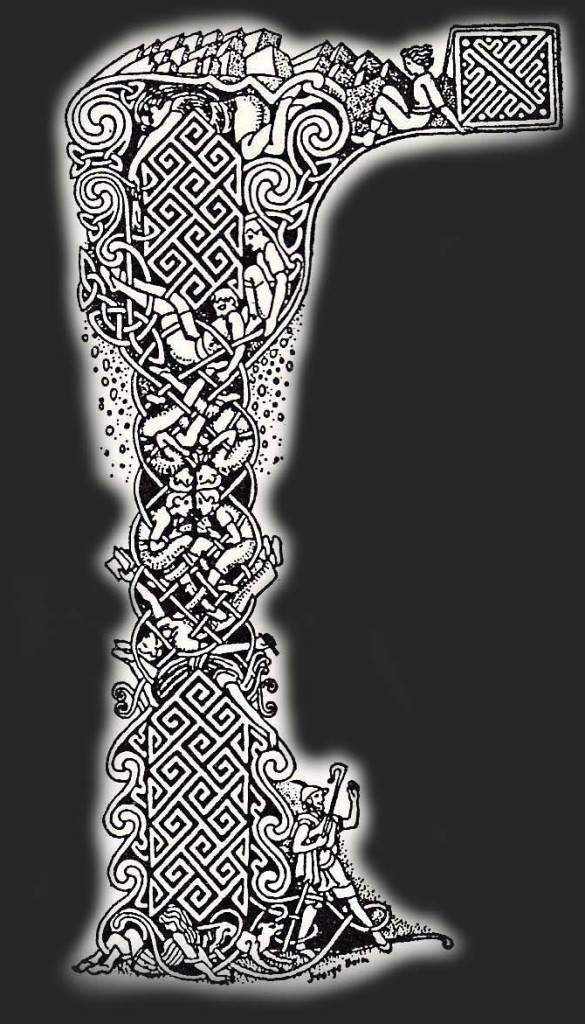 Factor VII Deficiency and Delayed Bleeding Syndrome
Factor VII Deficiency and Delayed Bleeding Syndrome
Factor VII Deficiency and Delayed Bleeding Syndrome
A Tale of Two Bleeding Disorders
Deerhound breeders and owners have long known that anesthesia is a real risk with Deerhounds—indeed, many sighthound breeds. It was long thought that, because of something about their particular physiology, sighthounds could be slow to wake up from anesthesia—sometimes never waking up. They could spike a huge temperature, that, if not brought down, could kill them. And they sometimes started bleeding during or after surgery—the typical story being the dog was OK when the owner went to bed but was found dead in the morning.
For many years, if a Deerhound required any surgical procedure, even simple ones, its owner was terrified something terrible might happen. But, in 2006, we got a lucky break.
A Deerhounder whose imported bitch had been spayed and bled from the incision, requiring seven plasma transfusions to survive, had both a veterinary team with the expertise to save the bitch and the foresight to send the blood to Cornell University to try to identify what went wrong. Which Cornell did: the problem was Factor VII Deficiency.
Factor VII is a blood clotting factor, and Factor VII Deficiency has been known to affect Beagles since 1996. A team of researchers at the University of Pennsylvania headed by Dr. Mary Beth Callan had recently identified the reason for the deficiency—a genetic mutation that is an autosomal recessive trait. The owner of the bitch smartly sent a DNA sample to Penn, and this yielded a bonanza—the newly identified mutation in Beagles was the same in, at least, this Deerhound. Now that we’ve been working in genetic research a while we know how very lucky it was for two different breeds to have the same mutation.
Independently, Dr. Debbie Cutter, another Deerhounder who is a member of the Health and Genetics Committee and a geneticist herself, read about the bleeding Deerhound and remembered seeing that there was a Factor VII deficiency test that might be available. There was—through Dr. Mary Beth Callan’s Beagle project. Dr. Callan, when contacted by Debbie, wanted more blood samples from possibly affected Deerhounds to determine if this was a widespread phenomenon. Debbie told Betty Stephenson (another member of the H&G Committee and a veterinarian), who it turned out had a bitch that had nearly bled to death after spaying in 1999. Luckily, Betty had saved some blood from the bitch, which had responded to a blood transfusion. Dr. Callan ran the test, and this bitch, too, was homozygous for the recessive mutation, i.e., had two copies of the gene. That means she had to have acquired the mutation from both parents—which came from two completely different lines—and so Factor VII deficiency in Scottish Deerhounds must also occur with fair regularity. And, of course, now that thousands of Deerhounds all over the world have been tested, that has turned out to be the case. So the Deerhound community heaved a sigh of relief—it looked like the bleeding mystery had been solved.
Until some Factor-VII-normal Deerhounds bled out after surgery. At first, it was thought that these were isolated incidents or veterinary errors. But, over time, as the deaths continued, the disheartening realization that the breed had a second bleeding problem set in. However, it wasn’t just Deerhounds—Greyhounds, too, seemed to have this problem. And someone was researching it.
That someone was Dr. Guillermo Couto, of The Ohio State University, and he had discovered that aminocaproic acid or tranexamic acid, given the morning of surgery and for five days post-op, prevented this delayed bleeding from happening. Dr. Couto was invited to be the health speaker at our 2012 national specialty, and from then on many Deerhound owners gave their Deerhounds aminocaproic acid or tranexamic acid when their dogs needed surgery, and bleeding incidents were reduced. But we still wanted to know why these episodes happened in the first place.
As we learned more, we realized that dogs affected by Factor VII Deficiency tended to bleed excessively during or right after surgery, while dogs with Delayed Bleeding Syndrome (DBS), usually started to bleed several hours—up to 24–48 hours—post op.
In 2014, the club was contacted by Dr. Michael Court, a veterinary anesthesiologist and geneticist at Washington State University, who was studying why some sighthounds were sometimes slow to wake up from anesthesia. He did not think this was caused by sighthound physiology, because if that were the case, there would be more cases. Instead, he suspected there might be a genetic mutation that caused the problem. He needed samples, and we were happy to provide them and also supported his research financially.
A couple of years later, after being told a particularly sad story about yet another Deerhound bleeding out after surgery, the H&G Committee contacted Dr. Court to ask, since this could be a reaction to anesthesia, if he would be interested in looking into this bleeding problem for us. It turns out he was already studying this problem in Greyhounds, but he had no idea it happened in Deerhounds, too! So we began to actively support Dr. Court’s research on this issue.
A few years later, Dr. Court discovered the gene mutation that caused the delayed bleeding we saw in our breed, and now, a few more years later, we are on the cusp of having a genetic test for this problem, too, so we will all know which dogs might need plasma during surgery (dogs with two copies of the Factor VII Deficiency variant) and which dogs need to be given aminocaproic acid or tranexamic acid after surgery or major trauma (dogs with one or two copies of the DBS variant). We are hopeful that these two problems are the only two genetic bleeding disorders Deerhounds have (although time will tell) and are all looking forward to the day when there will be no more stories about Deerhounds bleeding out.

